Beth Kephart's Blog, page 104
December 6, 2013
Raw to the Bone: On Springsteen, Rivers, and the Arc of Creativity in Poets' Quarterly
 April Lindner had the idea to gather us (Jane Satterfield, Ned Balbo, Ann Michael, me—her Springsteen loving friends) at the Glory Days Symposium at Monmouth University more than a year ago. We each gave papers, each talked about the influence that Bruce Springsteen has had on us.
April Lindner had the idea to gather us (Jane Satterfield, Ned Balbo, Ann Michael, me—her Springsteen loving friends) at the Glory Days Symposium at Monmouth University more than a year ago. We each gave papers, each talked about the influence that Bruce Springsteen has had on us.I spoke about the arc of creativity under the influence of Bruce Springsteen's river songs, and I'm so happy to be able to share a link to that full essay here today, for the piece now stands among works by Donald Hall, Daisy Fried, Barbara Crooker, and Caroline Maun (among others) in the current issue of Poets' Quarterly.
It begins like this, below, and carries forward here:
Might as well start with “Shenandoah,” the old pioneer song that Springsteen and the Seeger Sessions Band transformed into sweet bitters in the living room of Springsteen’s fabled New Jersey farmhouse. “Shenandoah,” the tenth song on the We Shall Overcome/Seeger Sessions album, is music being made, as Springsteen himself has said. Music created in the moment, held between teeth, conducted with the frayed bracelet strings of an uplifted hand. It’s music hummed, hymned, and high in the shoulder blades, deep in the blue pulse of a straining vein. Patti’s lighting candles in the darkening farmhouse, as the band tunes in. The antique clock ticks. The thickly framed mirror doubles the volumes of sound and space. And now the Sessions Band is elaborating, confabulating, and the Shenandoah roves.Many thanks to Leslie Nielsen, and Ann Michael.




Published on December 06, 2013 03:16
December 5, 2013
Roommates/Max Apple: Reflections
 So sometimes I do things backwards. I know all about Max Apple (of course!), I read Max Apple stories, I do an actual reading with Max Apple (courtesy of Lisa Zeidner and Rutgers-Camden), I occasionally say hello to Max at our University of Pennsylvania (where he is a full-time faculty member famous for his wisdom), and then I have his Fulbright-winning daughter, Leah, in my memoir class at Penn, and then I write about this daughter's passion for dance and kids, and then I attend an event in which Max's son, Sam, who is also a writer and who also teaches at Penn, practically puts me on the floor with laughter as he straightfacedly reads "God's Workshop" (read it here, but be forewarned), and then I go home and order one of Max's famous books, Roommates.
So sometimes I do things backwards. I know all about Max Apple (of course!), I read Max Apple stories, I do an actual reading with Max Apple (courtesy of Lisa Zeidner and Rutgers-Camden), I occasionally say hello to Max at our University of Pennsylvania (where he is a full-time faculty member famous for his wisdom), and then I have his Fulbright-winning daughter, Leah, in my memoir class at Penn, and then I write about this daughter's passion for dance and kids, and then I attend an event in which Max's son, Sam, who is also a writer and who also teaches at Penn, practically puts me on the floor with laughter as he straightfacedly reads "God's Workshop" (read it here, but be forewarned), and then I go home and order one of Max's famous books, Roommates.Which was published in 1994.
Which I read this morning.
Which, like everybody else who has ever read Roommates, I loved.
It's not a book that needs a Beth Kephart drumroll. It's not a story that could ever be invented. It's a true tale about a grandson and his grandfather (nearly fractious, incurably inseparable) and the life they live as roommates. Not just through Max's childhood, but through Max's years at the University of Michigan as well, when Rocky, 93, rules with an iron fist and a Yiddish tongue. Roommates as Max (secretly) falls in love. Roommates when Max finally settles down with the woman he loves, and the whole bunch of them move to Texas for Max's teaching job. Rocky grows older, Max's family grows larger, and Debby, Max's so-alive wife, begins to see two of things when there are just one. It's the beginning of a disease no one can stop, and Rocky, now 103, steps in and steps up—irascible, loving.
I know this story happened long ago. I know that time moves on and books freeze things and that there will always be that disconnect when reading autobiography and memoir. Still, I read this book and saw the story unfold in this very right now. I felt it—deeply. I believed it—wholly. I understood its lore.
It's a 1994 book that feels as if it were written yesterday.
Here's a scene I love, when Rocky decides that he, too, has a story to tell, a story that might make the struggling family some extra cash:
I shook his hand and hugged him. He moved away.
"Let me congratulate you. It's no small thing to write ninety-five pages."
"When it's in the magazines and they pay you, then you'll congratulate."
He didn't fool me. Even a hundred years doesn't cover an author's pride. He didn't know what fiction was, had never heard of any bestsellers, and in money anything beyond a hundred was a fortune. But he did know from sitting all those hours with his face an inch from the page that one word makes the next one possible and that even when it's all true, the ways in which the truth collects itself into a story can be as tricky as lies.
He drank a cup of coffee and sat down to squint at the television. "It's not as easy as I thought," he said, "but making a good dough is even harder."




Published on December 05, 2013 07:07
December 3, 2013
Handling is (also) for teen writers and those who teach them (thank you, Bookslut), and a librarian speaks
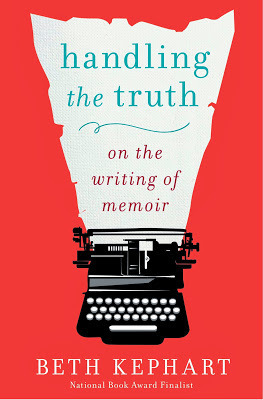 My friend Colleen Mondor is at it again—reading ardently, recommending generously. Her monthly Bookslut columns are a source of endless interest, and her December column is no different—featuring, among others, Jason Fforde, Gavin Extence, and Jenny Davidson.
My friend Colleen Mondor is at it again—reading ardently, recommending generously. Her monthly Bookslut columns are a source of endless interest, and her December column is no different—featuring, among others, Jason Fforde, Gavin Extence, and Jenny Davidson.Colleen also very kindly includes Handling the Truth in her column, and I love finding that book here, among the YA reads, for I have always believed that this book about the making of memoir was relevant for teens and those who teach them. I found that hunch confirmed while at NCTE in Boston, where I was thrilled to meet so many who teach memoir to younger writers and to hear their stories about the seventh, eighth, ninth, tenth, eleventh, and twelfth graders who have plunged into the personal.
Says Colleen:
For the teen writer, Handling the Truth offers some valuable insight into many facets of the writing life, especially finding the truth in a story. Packaging Handling the Truth along with a couple of the dozens of memoirs Kephart lists in her detailed bibliography would be a great way to tell the teen in your life that you take his or her writing dreams seriously.
I share as well these words from a kind librarian named Rick, forwarded to me by none other than Serena Agusto-Cox




Published on December 03, 2013 04:35
December 2, 2013
the world is full of people who cannot wait to tell you what they know (thoughts on teacherly greatness from Michael Sokolove)
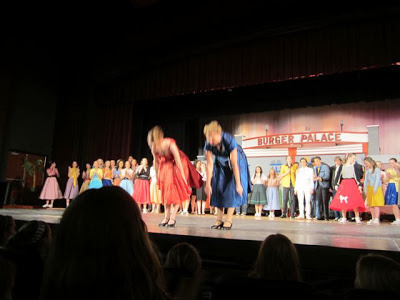 As my work week begins with a long drive to York on behalf of a client, I leave you all with these words from Michael Sokolove, in Drama High, about Lou Volpe, the extraordinary teacher of theater arts at Truman, in Levittown, PA.
As my work week begins with a long drive to York on behalf of a client, I leave you all with these words from Michael Sokolove, in Drama High, about Lou Volpe, the extraordinary teacher of theater arts at Truman, in Levittown, PA.Sokolove is reflecting on what makes a teacher great. It is a lesson for us all.
He does not tell her how. He never does. It is the essential aspect of his genius as an educator. The world is full of people who cannot wait to tell you what they know. What animates Volpe is creating moments for his kids to figure it out for themselves. His ego, though not small, allows for great patience. Very few high school directors could be more versed in theater, more knowing about what the finished product should look like. But he lets his kids find their own way there.




Published on December 02, 2013 04:16
December 1, 2013
Drama High/Michael Sokolove: Reflections
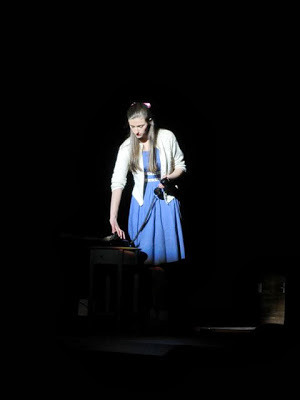 Readers of this blog know that in that wind-wild and yet utterly hospitable Boston of a week ago I was given the gift of my friend Jessica Keener's new collection of short stories, Women in Bed, and found myself full of that ecstatic joy that excellent storytelling yields.
Readers of this blog know that in that wind-wild and yet utterly hospitable Boston of a week ago I was given the gift of my friend Jessica Keener's new collection of short stories, Women in Bed, and found myself full of that ecstatic joy that excellent storytelling yields.Another gift? Michael Sokolove's Drama High—this time a gift of coincidence, for Michael and I shared the Penguin booth for a while during our respective signings (Gotham kindly sent along copies of Handling the Truth, which we shared with teachers of memoir). I knew of Michael, of course—his work for The New York Times Magazine, his previous books, including Warrior Girls. But I did not expect to find myself so utterly enthralled with this story about a particular high school drama teacher (Lou Volpe) and his cast of Truman High students. I did not expect to feel so emotional as I read—about those who thrill to teach and those who brim with learning, about students who master the raw art of vulnerability, about a very particular play and its casting and its profoundly searing staging.
Masterfully, Sokolove peels and reveals. His own journey as a student at Truman. His respect for this theater phenom, Lou Volpe. His affection (deep, unsullied) for the students he meets. His concerns about the state of education in this country, where the Common Core threatens common humanity and where the very things that the most challenged students need—provocations in the arts, narratives that get personal, unscripted teaching, a chance to speak, teachers who are given the time and room to look up and see—are going missing. In Drama High, we are not preached to, as readers. We are, instead, given a chance to reflect on issues of national import through the lens of a particular school, particular actors, a particular man on a mission.
Surely this book must be given this holiday season to every theater teacher in the country. Surely it must also be given to administrators and parents and students—to anyone, indeed, who likes a very good story beautifully told. I have the deepest respect for Sokolove as an observer, as a journalist, as a man of letters. I have infinite empathy for the many ways he clearly cares about young people and their teachers.
We'll be reading Drama High as we prepare to write our profiles this spring at the University of Pennsylvania. We'll be reading it very carefully, for all that it has to teach us about humanity and the arts, about story and its discovery.
Two more things. The photo above is of Alison Mosier-Mills, the daughter of my dear friend, Elizabeth Mosier, who has shared the theater arts of her talented children with me through the years; this is one of several photographs taken during Radnor High's recent staging of Grease. And Avery Rome, an editor about whom you have read here, is thanked in Michael's book for her valuable guidance. Knowing Avery as I do, I imagine that this partnership was a most invaluable one.




Published on December 01, 2013 15:41
November 29, 2013
Sister Kim's Girls Overwhelm Me with their Letters (Little Flower Catholic High School for Girls)
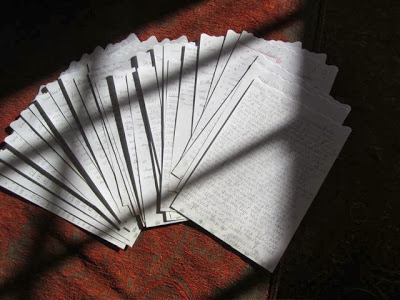 It was a busy week leading up to Thanksgiving—five days in Boston, a wind-rushed trip home, four rather complex side dishes to make in time for a fine family meal. And my boy is here—so rare, now, to have him near. So rare, and so I pause and stop for him.
It was a busy week leading up to Thanksgiving—five days in Boston, a wind-rushed trip home, four rather complex side dishes to make in time for a fine family meal. And my boy is here—so rare, now, to have him near. So rare, and so I pause and stop for him.Into all of this came a package from Little Flower Catholic High School for Girls. A brown envelope that held within some of the most moving letters I have ever received. Those of you who read this blog know how Sister Kim came to share two of my novels—Undercover and House of Dance—with her class. You know about the projects they created. But now, through letters, one by eloquent one, I met these girls. I learned a little about their lives. I got to see what it was like to meet me Elisa and my Rosie for the first time.
And I was honored by their presence in my life.
For the love in these girls' hearts. For the passion that Sister Kim instills in them. For the glory of goodness. For small things that are the biggest things, I am grateful on this day after Thanksgiving. I am blessed that the right readers found these books. And I am once again in awe of the transporting wisdom of younger readers.
Thank you, Sister Kim. Thank you, Every Sweet Little Flower-er.




Published on November 29, 2013 10:23
November 28, 2013
Women in Bed/Jessica Keener: Reflections
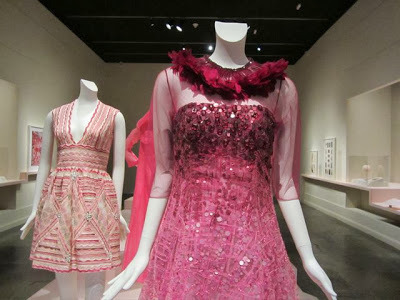 Jessica Keener and I became friends slowly, through social media, though both of us are, in fact, very much real-people people. Look you in the eyes people. Grab a cup of tea and talk people. Walk up Newbury Street in the freezing wind speaking of flowers in the summer people.
Jessica Keener and I became friends slowly, through social media, though both of us are, in fact, very much real-people people. Look you in the eyes people. Grab a cup of tea and talk people. Walk up Newbury Street in the freezing wind speaking of flowers in the summer people.Which is what we got to be when I went to Boston for a few days recently.
Last May, while traveling by train to Washington, DC, to surprise my niece on her thirteenth birthday, I read and loved Jessica Keener's much-heralded debut novel, Night Swim. In Boston, Jessica gave me an inscribed copy of her new and gorgeously produced collection of nine short stories, Women in Bed (The Story Plant). Once again I was reading Jessica while traveling—this time through the raucous Tuesday skies from Boston to Philadelphia.
Today, Thanksgiving, I woke to finish these shimmering and unexpected stories. These originals. Like Alyson Hagy, Jessica Francis Kane, Alice Elliott Dark, Susan Straight, Alice Munro, among others, Jessica Keener is an exquisite writer of the shorter tale. She has mastered that nearly impossible trick of condensing entire lives into compelling and telling brevities. Of finding just the right image. Of stealing just the right snatches of dialogue from what, in a novel, would run as full-fledged-and-then-he-coughed digressions or scenes.
We don't need anything more than what Jessica gives us here. We are convinced, persuaded, brokenhearted by these women who don't have what they want, or don't know what they can have, or can't find the proper language of desire. They run, they walk, they sit, they wait, they steer a boat out onto a chlorine-colored sea, and always, always, they return in their thoughts or in their lives to a lying-in place, to sheets and pillows.
Consistently the language is thrilling. Sometimes quietly. Sometimes not.
Look at this paragraph, from "Boarders":
In the shadows of the backyard, pine trees lacing the property appeared more distant than they actually were. The lawn, stiffened with frost, bent like thin, wire mesh under her feet. She headed for the small swing set and began to swing under a big, leafless oak. She knew it was cold but felt nothing.Now look at this, from "Woman With Birds in her Chest":
In April she struggled in her sleep. Her dreams became shadows of fingers, and the night, a troubling piece of lint in her throat. Beside her Miles slept with his arm heavy on her thigh. She wanted to wake him. Something wrong? Everything okay? he would have asked. But she didn't.Lawn like wire mesh. Night like a troubling piece of lint. These are two stellar images among countless stellar images written not to declare a brilliance but to elucidate a moment, a woman, a mood.
She didn't know. She didn't know.
I have learned from Jessica Keener, reading this collection. And I think that you will, too.
A sweet Happy Thanksgiving to you all.




Published on November 28, 2013 06:35
November 27, 2013
Handling the Truth is named a finalist in the 18th Annual Books for a Better Life Awards Program
 I was sitting in the back of the ALAN conference room, listening to some very interesting writers talk about love in YA literature when my phone buzzed. I took a quick look. It was Lauren Marino, my Gotham editor, sharing the news that Handling the Truth had been named a finalist in the 18th Annual Books for a Better Life Awards.
I was sitting in the back of the ALAN conference room, listening to some very interesting writers talk about love in YA literature when my phone buzzed. I took a quick look. It was Lauren Marino, my Gotham editor, sharing the news that Handling the Truth had been named a finalist in the 18th Annual Books for a Better Life Awards. It was one of those blink twice moments.
And also a very happy one.
There are ten categories, and among those named are Temple Grandin, Anne Lamott, Bill McKibben, Sara Gilbert, Maggie Scarf, Rick Hanson, and two other special people—long-time friend Patty Chang Anker and new friend Josh Hanagarne.
The finalists in my category are esteemed and I'm blessed to be named among them:
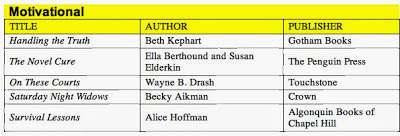
Meredith Viera and Arianna Huffington will be on hand. Mark Bittman and Richard Pine will be honored. What a fun night we will have. I imagine swirling.
I must find a dress.




Published on November 27, 2013 04:23
A few things happened while I was gone:
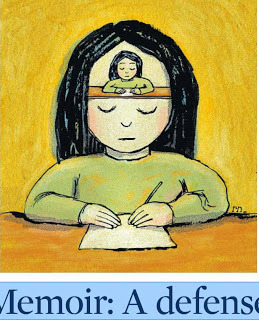 And so I share them here, briefly, for the day ahead is burstingly full of kitchen things, and family.
And so I share them here, briefly, for the day ahead is burstingly full of kitchen things, and family.And so, first, my defense of memoir officially appeared in Printers Row/Chicago Tribune, with the really wonderful illustration above, by Robert Neubecker. I just had to share his work. The essay itself can be found here.
A condensed version of my Bank Street keynote—in which I focused on teaching the truth sideways—appeared on Huffington Post, here.
Kirkus Reviews released its online Best Children's Books of 2013, and Dr. Radway's Sarsaparilla Resolvent appears here, on the middle grade list.
And a story I wrote about my grandmother and her home on Guyer Avenue in southwest Philadelphia appeared in the Philadelphia Inquirer, along with this photograph of a time long ago. That essay can be found here.
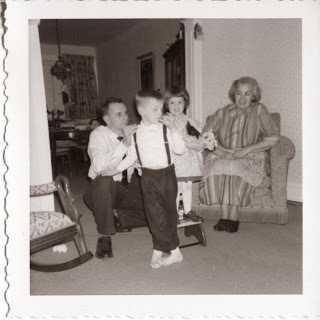




Published on November 27, 2013 04:02
November 26, 2013
Scenes from Boston

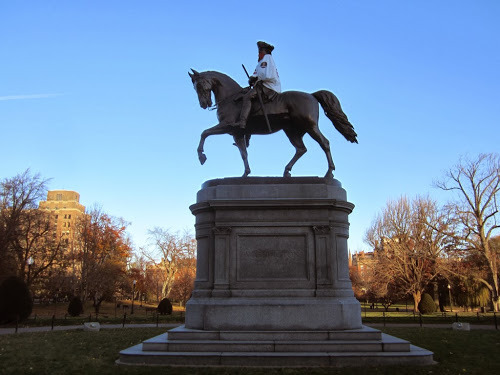
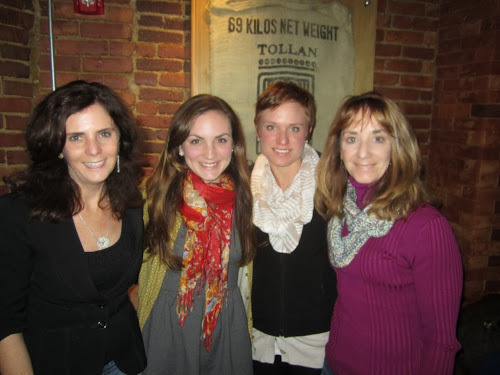

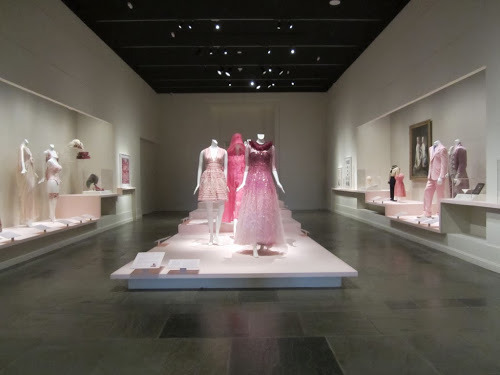
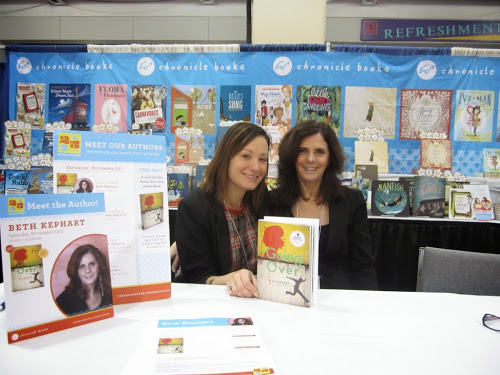 It was brrrr blue. It was sweet pink. It was Newbury Street and the public garden, the Boston Museum of Fine Arts and the Isabella Stewart Gardner Museum. It was my family (Linda, Brianne, Kelsey) and my friends (Jessica Keener and Vivian Lee Mahoney). It was writers and talk of writing. It was the super fine Chronicle team (Stephanie Wong and Amber Morley). it was Michaela MacColl and Colleen Gleason, and it was Walter Mayes, Jeffrey Harr, and the too cute for words Lisa Morris Wilkey, who sure as heck knows how to ask for a cab. And it was and always will be Tamra Tuller and me.
It was brrrr blue. It was sweet pink. It was Newbury Street and the public garden, the Boston Museum of Fine Arts and the Isabella Stewart Gardner Museum. It was my family (Linda, Brianne, Kelsey) and my friends (Jessica Keener and Vivian Lee Mahoney). It was writers and talk of writing. It was the super fine Chronicle team (Stephanie Wong and Amber Morley). it was Michaela MacColl and Colleen Gleason, and it was Walter Mayes, Jeffrey Harr, and the too cute for words Lisa Morris Wilkey, who sure as heck knows how to ask for a cab. And it was and always will be Tamra Tuller and me. I am on a mid afternoon panel. Then I head home. I pray for safe travels for us all. And holiday with loved ones.
 Posted with Blogsy
Posted with Blogsy



Published on November 26, 2013 03:57



